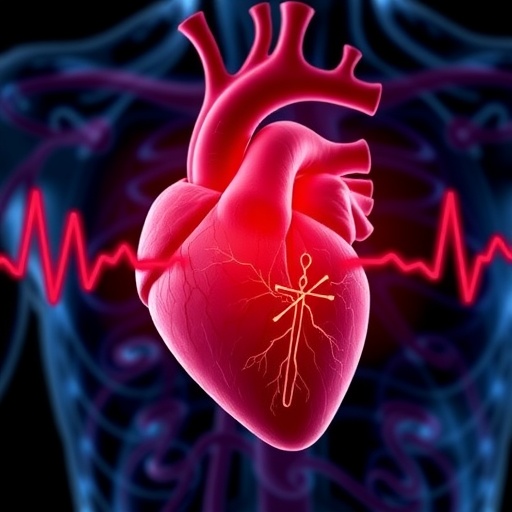TUCSON, Ariz., NEW YORK and AUSTIN, Texas, November 1, 2018 — The Huntington's Disease Regulatory Science Consortium (HD-RSC), launched in March 2018 by the Critical Path Institute (C-Path) and CHDI Foundation, today, along with the Clinical Data Interchange Standards Consortium (CDISC), announce the open availability of a newly developed Huntington's Disease Therapeutic Area User Guide (TAUG-HD). The guide has been developed to describe the most broadly utilized clinical concepts for data acquisition and analysis in Huntington's disease (HD) clinical studies using the CDISC standard format. The user guide defines parameters for data collection and allows datasets from different sources to be compared or combined for sharing and analysis.
Huntington's disease is an inherited neurodegenerative disorder that results in psychological symptoms and a loss of motor function and cognitive ability. TAUG-HD focuses on representing HD clinical data using the CDISC Study Data Tabulation Model (SDTM). Types of data covered include genetic information, biofluid sampling and imaging data across several modalities, as well as results from a variety of disease measures including the Unified Huntington's Disease Rating Scale (UHDRS) and the Huntington's Disease Cognitive Assessment Battery (HD-CAB). Historically, clinical trial data has been collected in diverse data formats in independent studies. The ability to align data using the newly developed HD data standards will enable efficient data collection, data integration and regulatory review.
"We are thrilled with the publication of the new Huntington's Disease Therapeutic Area User Guide," said C-Path Executive Director of the HD-RSC Ariana P. Mullin, Ph.D. "We encourage the research community to rapidly adopt these standards in their studies, as collection of data in a common format is key to supporting the development of urgently needed drug development tools and therapies for HD."
The US Food and Drug Administration (FDA) Binding Guidance requires that sponsors submit data in FDA-supported CDISC formats listed in the FDA Data Standards Catalog. CDISC standards have been adopted and used in more than 90 countries and are required by regulatory authorities in the US and Japan. To date, Therapeutic Area User Guides have been developed for more than 30 different disease areas. Use of these standards from the start of clinical research programs has proven capable of saving both time and resources. HD researchers are encouraged to implement these standards into their processes to support data sharing efforts and accelerate development.
"The adoption of CDISC standards will be critical to database development and harmonization, and will promote, coordinate, and facilitate the reuse of clinical data," said CHDI Chief Clinical Officer Cristina Sampaio, M.D., Ph.D. "These standards facilitate the wide sharing of data and, crucially, regulatory submissions. The newly-developed TAUG is an important step in our common goal of smoothing the path towards HD drug development and licensure."
"Our ongoing collaborations with C-Path in various disease areas, including Huntington's, continue to provide great value and insight to our work," said CDISC President and CEO David R. Bobbitt, MSc, MBA. "It was important to all of us that we help patients and families by creating data standards for HD to quickly move forward the most promising science for treatments."
###
About Critical Path Institute
C-Path (Critical Path Institute) is an independent, nonprofit organization established in 2005 as a public and private partnership. C-Path's mission is to catalyze the development of new approaches that advance medical innovation and regulatory science, accelerating the path to a healthier world. An international leader in forming collaborations, C-Path has established numerous global consortia that currently include over 1,500 scientists from government and regulatory agencies, academia, patient organizations, disease foundations, and dozens of pharmaceutical and biotech companies. C-Path is headquartered in Tucson, Ariz., with additional staff in multiple remote locations. For more information, visit http://www.c-path.org.
About CHDI Foundation, Inc.
CHDI Foundation, Inc.,is a privately funded nonprofit biomedical research organization that is exclusively dedicated to rapidly developing therapies that substantially improve the lives of those affected by Huntington's disease. As a collaborative enabler, CHDI seeks to bring the right partners together to identify and address critical scientific issues and move drug candidates to clinical evaluation as quickly as possible. CHDI scientists work closely with a network of more than 700 researchers in academic and industrial laboratories and clinical sites around the world in the pursuit of these novel therapies, providing strategic scientific direction to ensure that our common goals remain in focus. More information about CHDI can be found at http://www.chdifoundation.org.
About CDISC
CDISC creates clarity in clinical research by convening a global community to develop and advance data standards of the highest quality. Required by the United States Food and Drug Administration (FDA) and Japan's Pharmaceuticals and Medical Devices Agency (PMDA) and adopted by the world's leading research organizations, CDISC standards enable the accessibility, interoperability, and reusability of data. With the help of CDISC standards, the entire research community can maximize the value of data for more efficient and meaningful research that has invaluable impact on global health. CDISC is a 501(c)(3) global nonprofit charitable organization and is headquartered in Austin, Texas, with hundreds of employees, volunteers, and member organizations around the world. For more information visit, http://www.cdisc.org.
About Huntington's disease:
Huntington's disease is an inherited neurodegenerative disorder caused by a mutation in the huntingtingene. The defect causes a DNA sequence called a CAG repeat to occur many more times than normal. Each child of a parent with a mutation in the huntingtingene has a 50% chance of inheriting the mutation. As a result of carrying the mutation, an individual's brain cells degenerate leading to behavioral, cognitive, and motor impairments that, over the course of the disease, significantly reduce the individual's quality of life and ultimately cause death within 15 to 25 years of overt clinical onset. It is estimated that around one person in 10,000 carries the mutated huntingtingene. There are currently no therapeutics approved that slow the progression of Huntington's disease.
Media Contact
Kissy Black
[email protected]
615-298-1144
@CPathInstitute
https://c-path.org/c-path-chdi-and-cdisc-announce-therapeutic-area-user-guide-for-huntingtons-disease/?fbclid=IwAR1c8C_JvKdRJQ4BpGYAVM66NJpMCBKOnEuZdDqfqUycpRKaQPnuhNM5X4U




